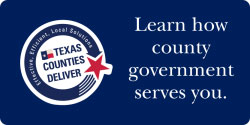Drone FAQ's
The FAA has made it clear in various guidance and policies that the distance is measured in statute miles when it is referring to when a drone operator must contact the airport manager or the air traffic control tower.
The FAA has interpreted the notification of a drone operator that it may be unsafe to fly as official notification that the operation could be perceived as reckless. It is possible law enforcement could be called if operations take place after the operations have been denied due to safety reasons. The FAA may take enforcement action against pilots who fly recklessly. Drone operators should not be denied unless there is a safety or operational issue that prevents the drone operations from being compatible with the airspace. If denied, an operator may question the response they have been given by contacting an FAA Flight Standards District Office.
The current stipulation only requires the drone operator to provide prior notice, which a voicemail or email would be considered to provide. Allowing enough time for the airport manager or the air traffic control tower to respond so that they can inform you whether the operation is safe or hazardous based on the type of activity and your location is best practice. If you plan to fly within three (3) miles of an airport, operations should take place only after two-way communication has been established; this is due to the higher probability for low flying manned aircraft within the three mile area.
You should not expect permission to fly on an airport if it is busy. You should meet with the airport manager to discuss the possibility of flying on the airport. If permission is granted, you will likely be required to enter into a written agreement with the airport.
It is best to be aware of the airport's runway orientation and where manned aircraft will be flying when flying near an airport. It is also helpful to have a radio on the Unicom or tower frequency so you can be alerted when aircraft is nearby. The FAAs safety guidance also includes the following:
- Fly at or below 400 feet and remain clear of surrounding obstacles.
- Keep the aircraft within visual line of sight at all times.
- Remain well clear of and do not interfere with manned aircraft operations.
- Don't fly within five (5) miles of an airport unless you have contacted the airport manager or the air traffic control tower prior to operations.
- Don't fly an aircraft that weighs 55 pounds or more.
- You could be fined for endangering people or other aircraft if you are careless or reckless with the unmanned aircraft.
- Long term operations within five miles of an airport should establish a letter of agreement with the airport manager or the air traffic control tower.
- Model aircraft must not operate in TFR areas, prohibited areas, restricted areas, or special flight rules areas without specific authorization.
Yes, hobbyist can operate under Part 107. This rule became effective August 29, 2016. However, hobbyists are explicitly not required to follow these regulations. It is important to be aware of all of Part 107s rules if you choose to operate under this set of regulations versus Part 101. One of the requirements includes obtaining a remote pilot certificate.
A hobbyist may choose to operate under the requirements of Part 107 as it may be beneficial. For example, there is no requirement to operate under any CBO guidelines or to notify nearby airports. Another benefit of operating under Part 107 is that you can seek approval for access to certain airspace (Class B, C, D, and portions of E) by a process that is mostly automated. An operator can make this request to the air traffic control via the FAAs Unmanned Aircraft Systems website.
According to FAA guidance, "ATC services, inclusive of separation, are not provided to Part 101, Subpart E operators." Additionally, "Part 107 operations are not defined as VFR or IFR and require no separation or services by ATC." Air traffic controllers may issue advisories to manned aircraft to make them aware of drone activity but will not separate aircraft from this activity.
Pilots can report a near miss or an incident to air traffic control by radio or on the ground by telephone. Pilots may also notify the FAAs 24-hour Regional Operations Center and file a report with the Aviation Safety Reporting System.

